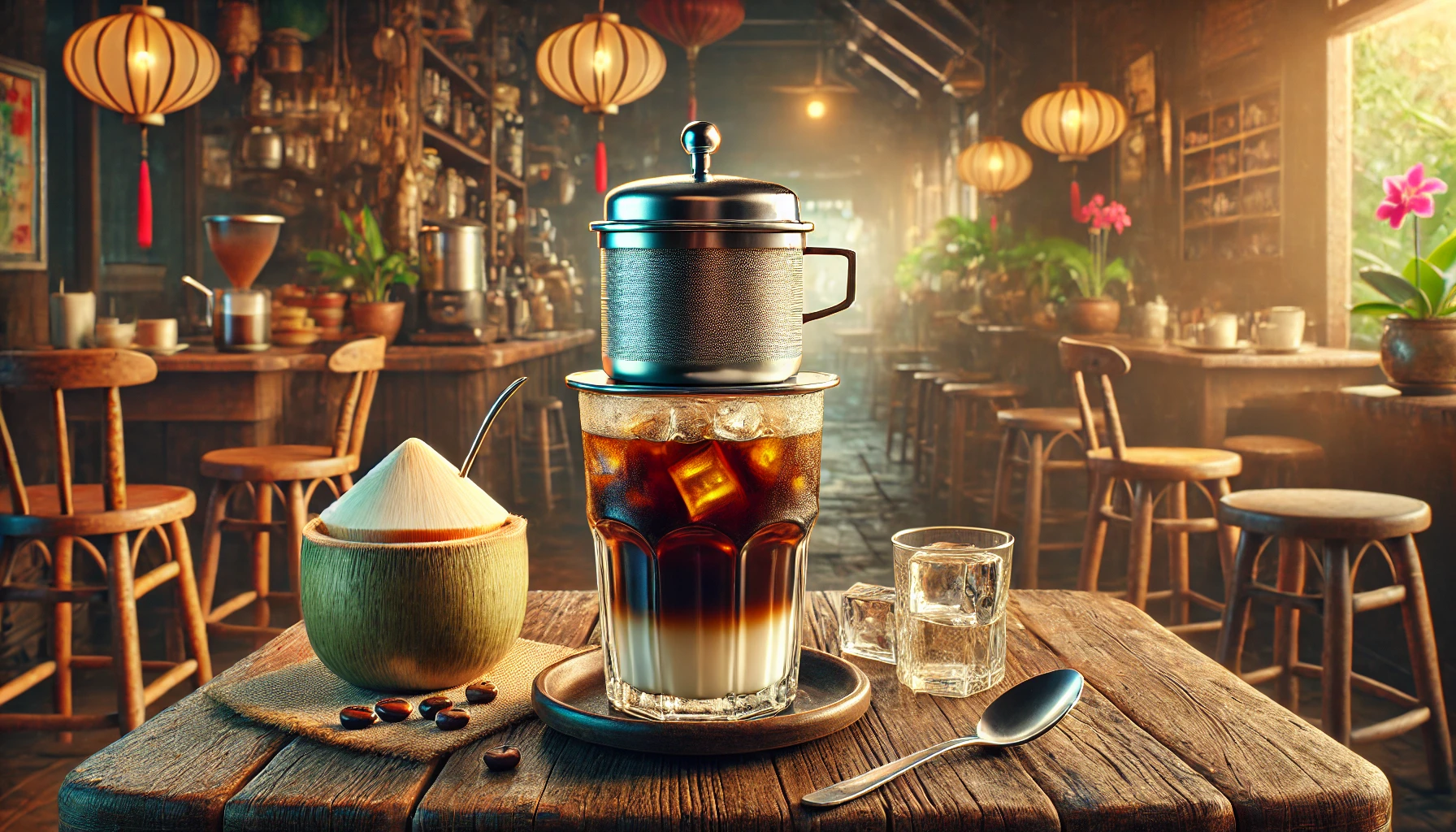Vietnam isn’t just one of the largest coffee producers in the world—it’s also home to one of the most distinctive and flavorful coffee cultures. With its strong brews, unique preparation methods, and creative ingredients, Vietnamese coffee offers a bold experience that reflects the country’s rich history, resourcefulness, and passion for the drink.
In this article, we’ll explore how coffee became a staple in Vietnam, the traditional brewing techniques, and the iconic drinks that make Vietnamese coffee culture stand out globally.
A Brief History of Coffee in Vietnam
Coffee was introduced to Vietnam by French colonists in the mid-19th century, along with Catholic missionaries and colonial farming practices. The French brought Arabica beans, but over time, Robusta became the dominant crop due to its resilience and high yield.
Today, Vietnam is the second-largest coffee exporter in the world, after Brazil. Most of its production is Robusta, which has more caffeine and a stronger, more bitter flavor than Arabica.
Coffee production is centered in the Central Highlands, especially in regions like Buôn Ma Thuột and Đắk Lắk.
The Traditional Vietnamese Coffee Setup
Vietnamese coffee is often brewed using a small metal filter called a phin. This slow-drip method is simple, portable, and perfect for savoring coffee with intention.
The Phin Filter:
- Made of stainless steel or aluminum
- Includes a chamber, perforated filter plate, and lid
- Sits directly over a cup or glass
- Brews strong, concentrated coffee—similar to espresso
This method is commonly used at home, in cafés, and at street stalls across the country.
Signature Vietnamese Coffee Drinks
Cà Phê Sữa Đá (Vietnamese Iced Coffee with Milk)
Perhaps the most famous Vietnamese coffee, cà phê sữa đá is made by:
- Brewing strong Robusta coffee with a phin
- Pouring it over a layer of sweetened condensed milk
- Stirring and serving over ice
The result is bold, sweet, creamy, and refreshingly cold. It’s the perfect antidote to Vietnam’s tropical climate.
Cà Phê Đen (Black Coffee)
Served hot or iced, this is strong phin-brewed coffee without milk. It’s dark, intense, and sometimes lightly sweetened with sugar.
Cà Phê Trứng (Egg Coffee)
Originating in Hanoi, egg coffee is made by whipping egg yolks with sugar and sweetened condensed milk until frothy, then adding it on top of hot black coffee.
It tastes like a coffee custard dessert—rich, sweet, and surprisingly balanced.
Cà Phê Dừa (Coconut Coffee)
A modern favorite, coconut coffee is a blend of strong black coffee, sweetened condensed milk, and coconut milk or cream, served over crushed ice. Creamy, tropical, and indulgent.
Yogurt Coffee and Other Innovations
Vietnamese cafés have also embraced coffee with yogurt, fruit, and even avocado. These creations reflect both local ingredients and a bold spirit of experimentation.
Coffee as a Daily Ritual
Coffee is a deeply embedded part of daily life in Vietnam. You’ll find locals sipping coffee:
- At early morning street stalls
- In sidewalk cafés with tiny stools
- Inside trendy, modern specialty cafés
- As part of business meetings or social gatherings
It’s not just about caffeine—it’s about community and connection.
Common café features:
- Open-air seating
- Slow pace—no rush to leave
- Music (often acoustic or lo-fi)
- Handwritten menus and artistic presentation
Robusta: The Backbone of Vietnamese Coffee
Unlike most specialty coffee cultures that emphasize Arabica, Vietnam proudly champions Robusta. It has:
- Twice the caffeine of Arabica
- A stronger, bolder flavor
- A more earthy and bitter taste profile
- Lower acidity and higher crema when brewed well
Vietnam has also begun developing specialty-grade Robusta, with improved processing methods, traceability, and quality control.
Vietnamese Coffee Goes Global
Thanks to diaspora communities and international interest, Vietnamese coffee is now found in cafés from Paris to New York to Sydney. Brands like Trung Nguyên and Nguyen Coffee Supply have helped bring phin brewing and Vietnamese-style beans to a global audience.
Phin filters are also gaining popularity among home brewers looking for a unique, low-tech way to enjoy strong coffee.
Final Thoughts: Strong, Sweet, and Unforgettable
Vietnamese coffee is more than a drink—it’s a sensory experience rooted in culture, resilience, and creativity. From the slow drip of the phin to the rich swirl of condensed milk, every cup tells a story of place and tradition.
Whether you’re sipping a bold cà phê sữa đá on a hot afternoon or indulging in a creamy egg coffee in Hanoi, one thing is clear: Vietnam has created a coffee culture all its own—and the world is paying attention.
